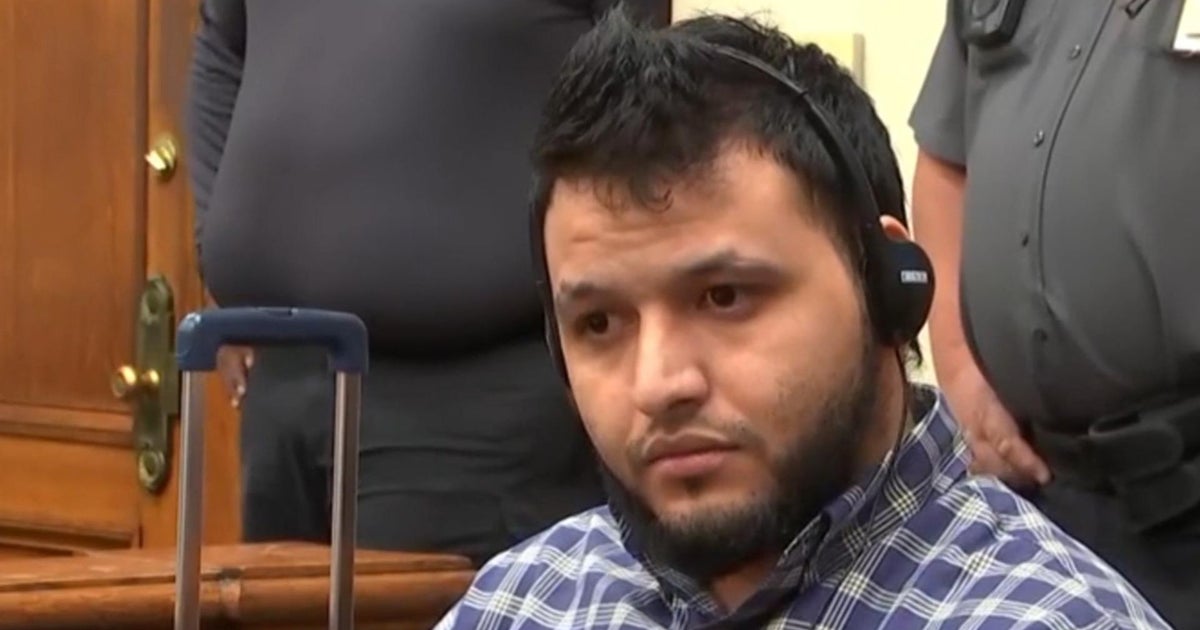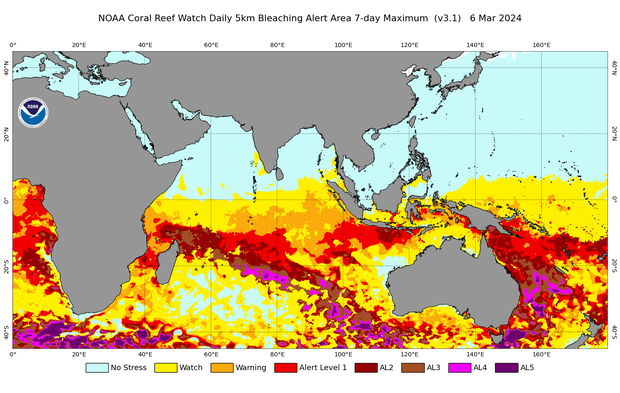CBS News
How a “throuple” relationship ended in a Florida murder mystery

From reality television, to the plot of “Bridgerton,” 2024 might very well be the year of the “throuple.” The polyamorous relationship involving three romantic partners, instead of the more conventional two, seems to be popping up everywhere.
And a throuple is at the center of a murder investigated by “48 Hours” and correspondent Peter Van Sant in “Who Killed Aileen Seiden in Room 15?” airing Saturday, Oct. 19 at 10/9c on CBS and streaming on Paramount+.
“We needed to know what happened inside that hotel room outside of three people entered and two came out carrying a body,” said Franklin County Assistant Prosecutor Jarred Patterson.
The case began when investigators learned of a bloody crime scene in room 15 at a Florida motel and the remains of a woman dumped by the side of a road about six miles away.
“She had bruises … from head to toe, covering her entire body,” lead investigator Ronnie Jones told Van Sant. “She suffered … I’ve never seen anything like it.”
Jones, now retired from the Franklin County Sheriff’s Office, says that not long after the woman’s remains were discovered at an abandoned cul-de-sac on April 23, 2018, he connected it to the bloody motel room.
“I just put two and two together,” Jones said. “It wasn’t just somebody cut theirself and bled a little bit on the bed. I mean the amount of blood … tells me that whoever was here was probably deceased.”
The woman was soon identified as Aileen Seiden, a 31-year-old from about 400 miles away in Miami. Investigators learned that Seiden had been visiting Franklin County and stayed at the motel in room 15, with two other people — Zachary Abell and Christina Araujo. Learning what happened inside the motel room would mean first understanding the dynamic of Seiden, Abell and Araujo’s relationship.
Seiden’s best friend spoke to “48 Hours” asking that we do not to use her real name and to refer to her as “Allie.” She says that when Seiden began dating both Abell and Araujo in 2017, it didn’t take long for trouble to start.
“This whole dynamic started to change where one of them always seemed to be the odd man out or was jealous,” said Allie. “And at that point it just started to spiral out of control.”
Allie says that Seiden would tell her that Abell would physically abuse her.
“Aileen would call me… and say, ‘You have to come over here, like he hurt me again,'” Allie said.
Seiden also had physical altercations with Araujo, says Allie, but her friend was afraid to call 911 or go to police for help.
“She wouldn’t tolerate being messed with usually by anyone,” said Allie. “However, there was something different about this.”
Allie says she learned that Seiden’s fear about going to police stemmed from threats made by Araujo. According to Allie, Araujo would often say her father — who has a high position at a south Florida sheriff’s department — could make her problems go away.
“And the same answer was always that she came from police royalty that she had gotten away with … everything in the past,” said Allie. “And there was going to be no solutions to… someone like Aileen getting hit.”
Allie says Seiden suffered through the relationship until the throuple went on a road trip that led them to Franklin County. That was when Allie says Aileen called her saying she needed to find a way out.
“She said, ‘I need your help.'”
Allie crafted a plan to help Seiden get away from Abell and Araujo, but it wasn’t long after that she learned Seiden was dead.
Abell and Araujo were both charged in Seiden’s murder. For years, they claimed their innocence. It would take almost six years to bring the case to court, but by then only one of them would be on trial.
CBS News
Bird flu reaches Hawaii, the last state that had escaped it

Authorities in Hawaii are warning residents who attended a local pet fair to watch for symptoms of avian influenza after a local flock of ducks and other birds tested positive for the H5N1 virus that has fueled a global outbreak of infections.
Officials suspect wild migrating birds are likely to blame for the first known infection of a flock in Hawaii, which had been the last state in the country with no reported cases in poultry or wild birds during the current outbreak.
Sequencing done by the U.S. Department of Agriculture’s national lab in Iowa confirmed the infection, federal officials announced Monday.
The specific genotype of the virus that infected the birds is known as A3, said Lyndsay Cole, a spokesperson for the federal Animal Plant Health Inspection Services.
This is different from the B3.13 genotype that has been fueling this year’s unprecedented outbreak on dairy and poultry farms and suggests the virus spilled over into the flock in Hawaii from migrating wild birds.
Investigators have not turned up any links so far between the flock and imported animals or travel, a spokesperson for Hawaii’s Agriculture Department said. The island has “strict importing regulations for birds and other animals,” the spokesperson said.
All the infected birds were housed at the same site, though investigations are ongoing to root out other potential cases. The birds were also not symptomatic until several days after the fair, the state Health Department said, lowering the risk to humans.
“As the birds were not showing signs of infection at the time of the fair, the likelihood of spreading H5N1 to humans is low. However, out of an abundance of caution, DOH recommends that individuals who attended the fair and touched a duck or goose monitor for influenza-like illness (ILI) and conjunctivitis,” the state said in a release.
A quarantine order was issued for the property where the birds lived and all will be required to be “depopulated and the premises cleaned and disinfected,” the state Agriculture Department said. An order was also issued to prevent any animals from being moved in or out of the site.
At least 10 birds, which included ducks, a goose and a zebra dove, had been reported dead at the property on Nov. 12. Samples from the dead birds were sent to be tested for the virus.
Closely watching for human cases
Confirmation of the infected flock in Hawaii follows a detection of the virus in the area from wastewater samples collected by the state earlier this month.
Health officials around the country have been closely watching for signs of H5N1 spreading in their communities amid mounting cases in humans across North America.
At least 53 cases have been confirmed across seven states so far this year, the federal Centers for Disease Control and Prevention (CDC) says. Most are linked to the B3.13 version of the virus that has been infecting workers at dairy farms and nearby poultry farms in recent months. None of them are known to have been severely ill.
Health officials in Canada announced this month that they had detected a case of H5N1 bird flu in a critically ill hospitalized teenager. That patient had been infected by the D1.1 genotype of H5N1, which is related to another ongoing poultry outbreak in British Columbia, the Canadian province where they lived.
Experts say the virus that infected the teenager does appear to have some worrying mutations, which might explain why the case was more severe.
“The preliminary sequence from the H5N1 human case in British Columbia has been posted and it is not good news,” Scott Hensley, a professor of microbiology at the University of Pennsylvania, posted on Nov. 16.
Genetic sequencing data from human cases so far in the U.S. have not found any signs of the virus mutating to spread more efficiently between humans or to be significantly more dangerous, the CDC says.
But the agency also recently found evidence that several cases had been asymptomatic and gone undetected during the outbreak so far, prompting stepped up testing recommendations.
CBS News
Laken Riley murder suspect was grilled by wife after arrest, jail phone call reveals: “What happened with the girl?”

An FBI special agent testified Monday that electronic location data seems to place Georgia nursing student Laken Riley and the man accused of killing her in the same wooded area at the time of her death. Meanwhile, prosecutors also played a recording of Ibarra being grilled by his wife about the case during a jail phone call.
Jose Ibarra, 26, is charged with murder and other crimes in Riley’s death in February. He waived his right to a jury trial, meaning Athens-Clarke County Superior Court Judge H. Patrick Haggard is hearing the case and will alone decide on Ibarra’s guilt or innocence.
The killing of the 22-year-old woman added fuel to the national debate over immigration during this year’s presidential campaign when federal authorities said Ibarra illegally entered the U.S. in 2022 and was allowed to stay in the country while he pursued his immigration case.
FBI Special Agent James Burnie told the court Monday that he reviewed location data from Ibarra’s cellphone and Riley’s cellphone and smart watch. GPS data from Riley’s watch very precisely puts her inside the wooded area with running trails where her body was found on Feb. 22. Pings between Ibarra’s phone and cell towers and the fact his phone wasn’t making any Wi-Fi connections at the time indicate he was also likely in the woods, Burnie said.
Prosecutors also played a recording of a jail phone call from May between Ibarra and his wife, Layling Franco. FBI specialist Abeisis Ramirez, who translated the call from Spanish, testified that Ibarra told Franco that he had been at the University of Georgia looking for work, and that his wife repeatedly said she was fed up and that she wanted him to tell the truth.
Franco “continues to ask, ‘What happened with the girl?'” and said Ibarra “must know something,” Ramirez said. He responds: “Layling, enough.” Ramirez said Franco told Ibarra that it’s crazy that police only found his DNA.
Miguel Martinez/Atlanta Journal-Constitution via AP, Pool
Ibarra is charged with one count of malice murder, three counts of felony murder and one count each of kidnapping, aggravated assault, aggravated battery, hindering an emergency telephone call, tampering with evidence and being a peeping Tom.
Ibarra took selfies of himself early on the day Riley was killed, according to testimony from an FBI agent who analyzed data from cellphones seized from the apartment where Ibarra lived with his two brothers and two other people. In the photos, Ibarra is wearing a black Adidas baseball cap and a dark hooded jacket.
A few hours before Riley was killed, a man in a black Adidas baseball cap was captured on surveillance video at the door of a first-floor apartment in a University of Georgia housing complex. A female graduate student who lived there testified Monday that she heard someone trying to get inside her apartment when she was in the shower. As she looked through the peephole, the person ducked and walked away, but then she saw the same person peering into her window, she said.
Police officers using a grainy screen shot from the surveillance video approached a man wearing a black Adidas cap the day after the killing. That turned out to be Diego Ibarra, one of Jose Ibarra’s brothers.
University of Georgia police Sgt. Joshua Epps testified that he was called to question Diego Ibarra outside the apartment where the Ibarras lived. Epps testified that the brother had no obvious recent injuries.
Outside the apartment, police also questioned Argenis Ibarra, Jose Ibarra and Rosbeli Elisbar Flores Bello. Epps and Corporal Rafael Sayan, who speaks Spanish and helped with the questioning, testified that they noticed scratches on Jose Ibarra.
When asked why his knuckles were red, Jose Ibarra told them it was because of the cold but didn’t really explain several scratches on his arms, Sayan said.
Security video from the apartment complex showed a man wearing a shirt with a distinctive pattern throwing something into a trash bin. A crime scene specialist from the Georgia Bureau of Investigation testified there was a lot of clothing in the one-room apartment but that she didn’t find that shirt in the apartment and didn’t find any bloody clothing.
A police officer testified Friday that he found a dark hooded jacket in the trash bin seen in the video and that testing revealed Riley’s blood on the hoodie.
Flores Bello identified the man in the video as Jose Ibarra and confirmed that identification on the witness stand Monday. She said she had previously seen him wearing the dark hooded jacket and thought it was strange that he threw it away.
Testifying through of an interpreter, Bello said she met Ibarra in Queens, New York. Ibarra’s brother, Diego, lived in Athens and had been urging Ibarra to move there, saying they would find work. She traveled with Ibarra to join his brother in Georgia. She said they went to the Roosevelt Hotel, which served as an intake center for migrants, to ask for a “humanitarian flight” to Georgia in September 2023. When they arrived in Atlanta, a friend of Diego Ibarra picked them up and drove them to Athens.
Riley was a student at Augusta University College of Nursing, which also has a campus in Athens, about 70 miles east of Atlanta.
Republicans, including President-elect Donald Trump, blamed Democratic President Joe Biden’s border policies for her death. As he spoke about border security during his State of the Union address weeks after the killing, Biden mentioned Riley by name.
In March, FBI Director Christopher Wray offered unusually expansive comments on Riley’s murder.
“I want to tell you how heartbroken I am — not just for the family, friends, classmates, and staff who are grieving Laken’s loss,” Wray told a group gathered at the University of Georgia. “I’m saddened to see that sense of peace shattered by Laken’s murder and the subsequent arrest of a Venezuelan national who’d illegally entered the country in 2022.”
He said the FBI was doing “everything [it] can to help achieve justice for Laken.”
CBS News
Parts of Great Barrier Reef dying at record rate, alarmed researchers say; “worst fears” confirmed

Parts of the Great Barrer Reef have suffered the highest coral mortality on record, Australian research showed Tuesday, with scientists fearing the rest of it has suffered a similar fate.
The Australian Institute of Marine Science said surveys of 12 reefs found up to 72 percent coral mortality, thanks to a summer of mass bleaching, two cyclones, and flooding.
In one northern section of the reef, about a third of hard coral had died, the “largest annual decline” in 39 years of government monitoring, the agency said.
Brett Monroe Garner / Getty Images
Often dubbed the world’s largest living structure, the Great Barrier Reef is a 1,400-mile expanse of tropical corals that house a stunning array of biodiversity.
But repeated mass bleaching events have threatened to rob the tourist drawcard of its wonder, turning banks of once-vibrant corals into a sickly shade of white.
Bleaching occurs when water temperatures rise and the coral expels microscopic algae, known as zooxanthellae, to survive.
If high temperatures persist, the coral can eventually turn white and die.
This year had already been confirmed as the fifth mass bleaching on the reef in the past eight years.
NOAA Coral Reef Watch
But this latest survey also found a rapid-growing type of coral — known as acropora — had suffered the highest rate of death.
This coral is quick to grow, but one of the first to bleach.
Lead researcher Mike Emslie told public broadcaster ABC the past summer was “one of the most severe events” across the Great Barrier Reef, with heat stress levels surpassing previous events.
“These are serious impacts. These are serious losses,” he said.
World Wildlife Fund-Australia‘s head of oceans, Richard Leck, said the initial surveys confirmed his “worst fears.”
“The Great Barrier Reef can bounce back but there are limits to its resilience,” he said. “It can’t get repeatedly hammered like this. We are fast approaching a tipping point.”
Leck added the area surveyed was “relatively small” and feared that when the full report was released next year “similar levels of mortality” would be observed.
He said the findings reinforced Australia’s need to commit to stronger emission reduction targets of at least 90 percent below 2005 levels by 2035 and move away from fossil fuels.
The country is one of the world’s largest gas and coal exporters and has only recently set targets to become carbon neutral.










